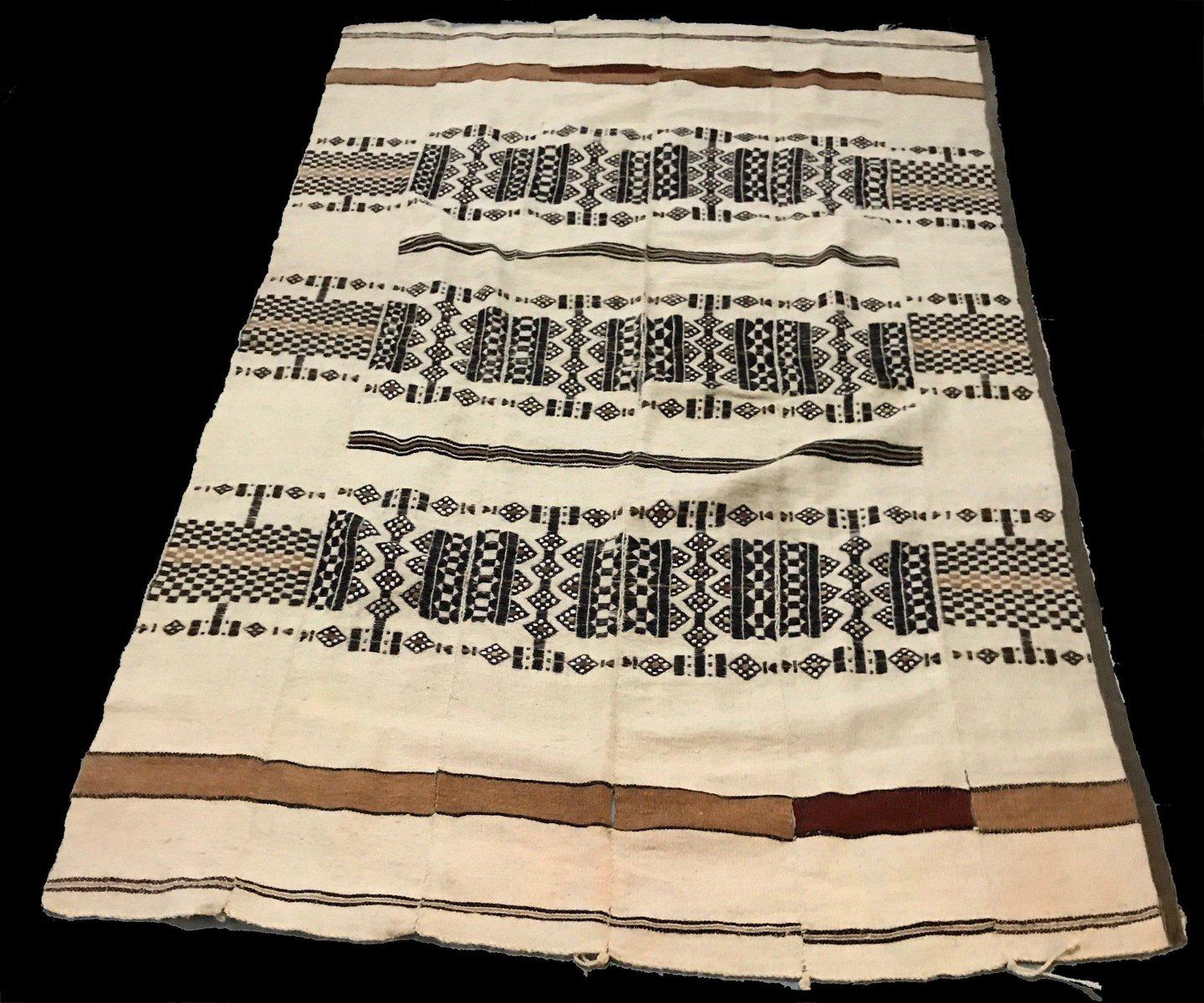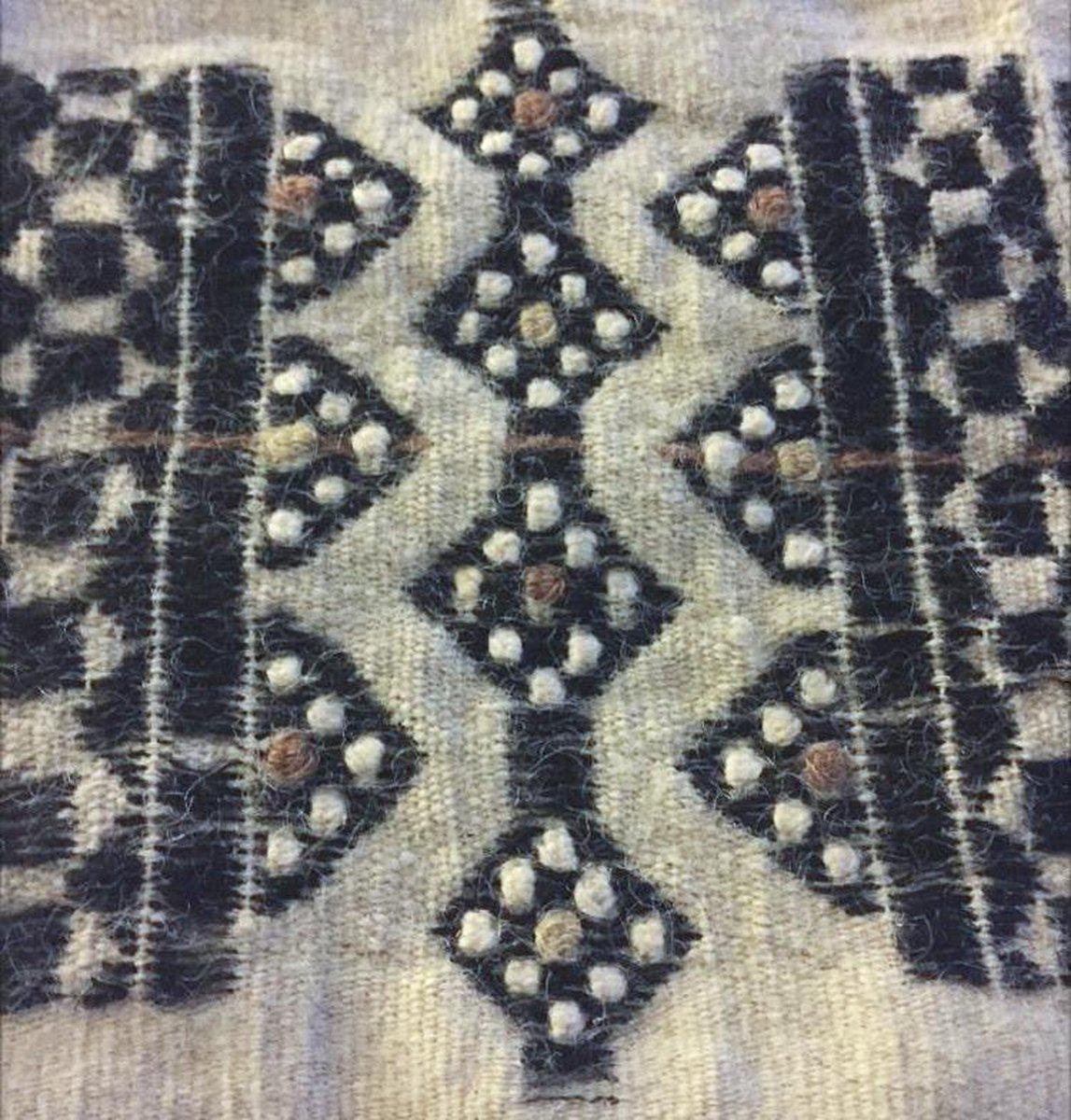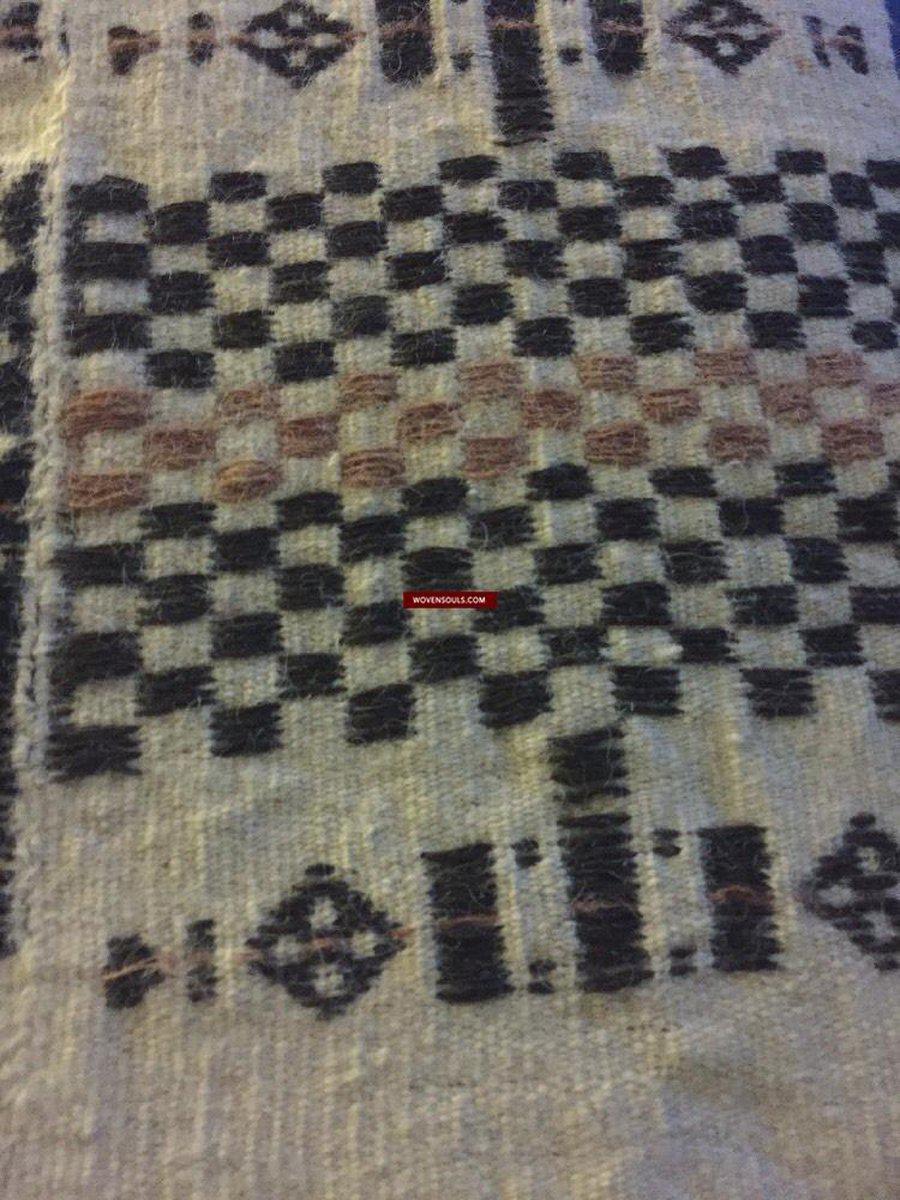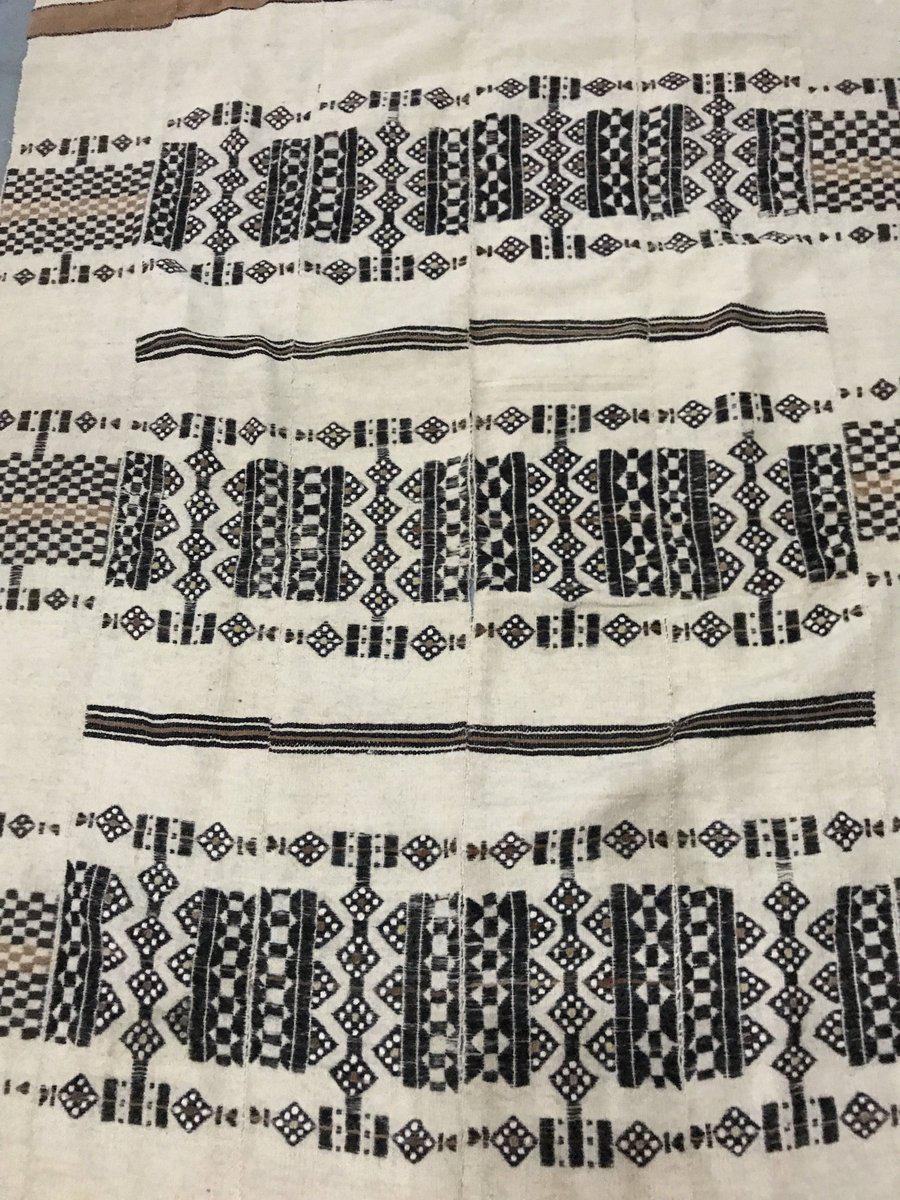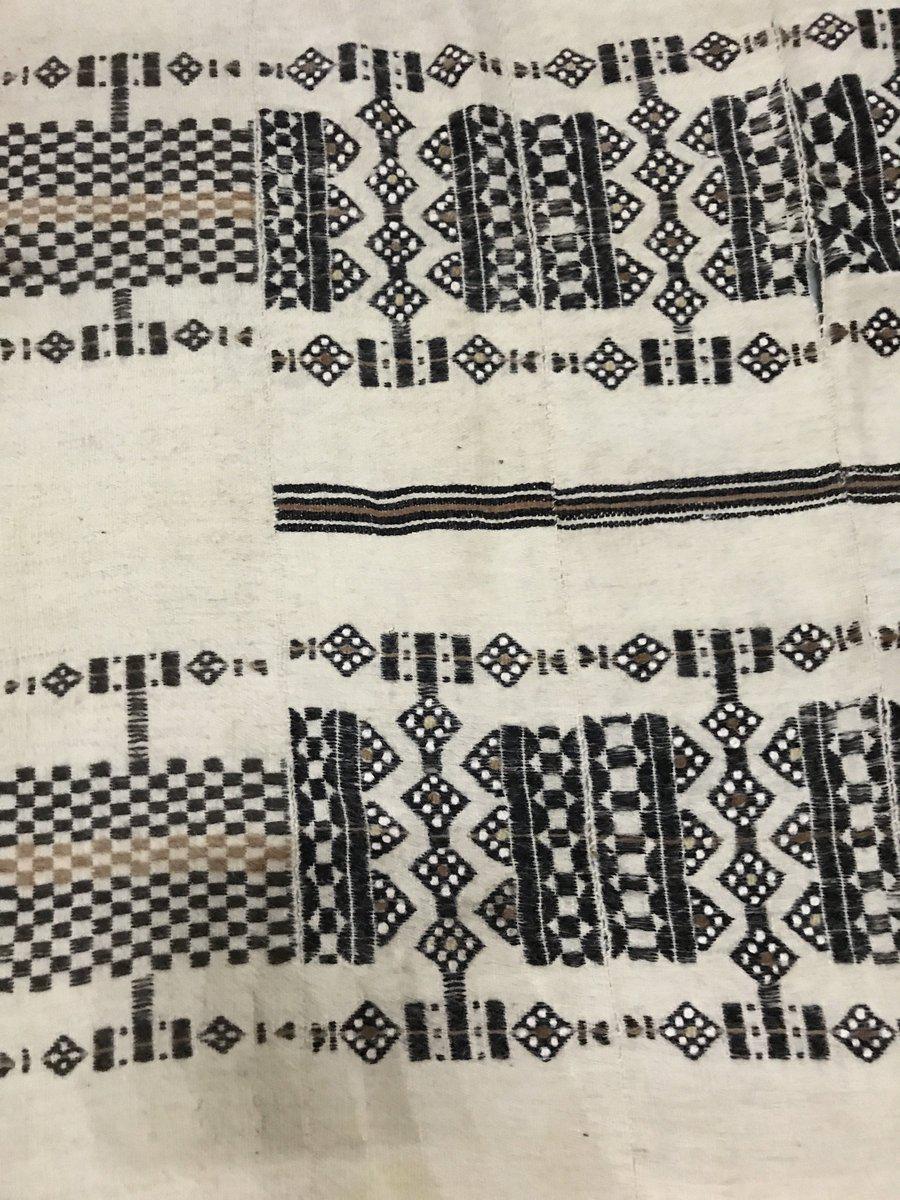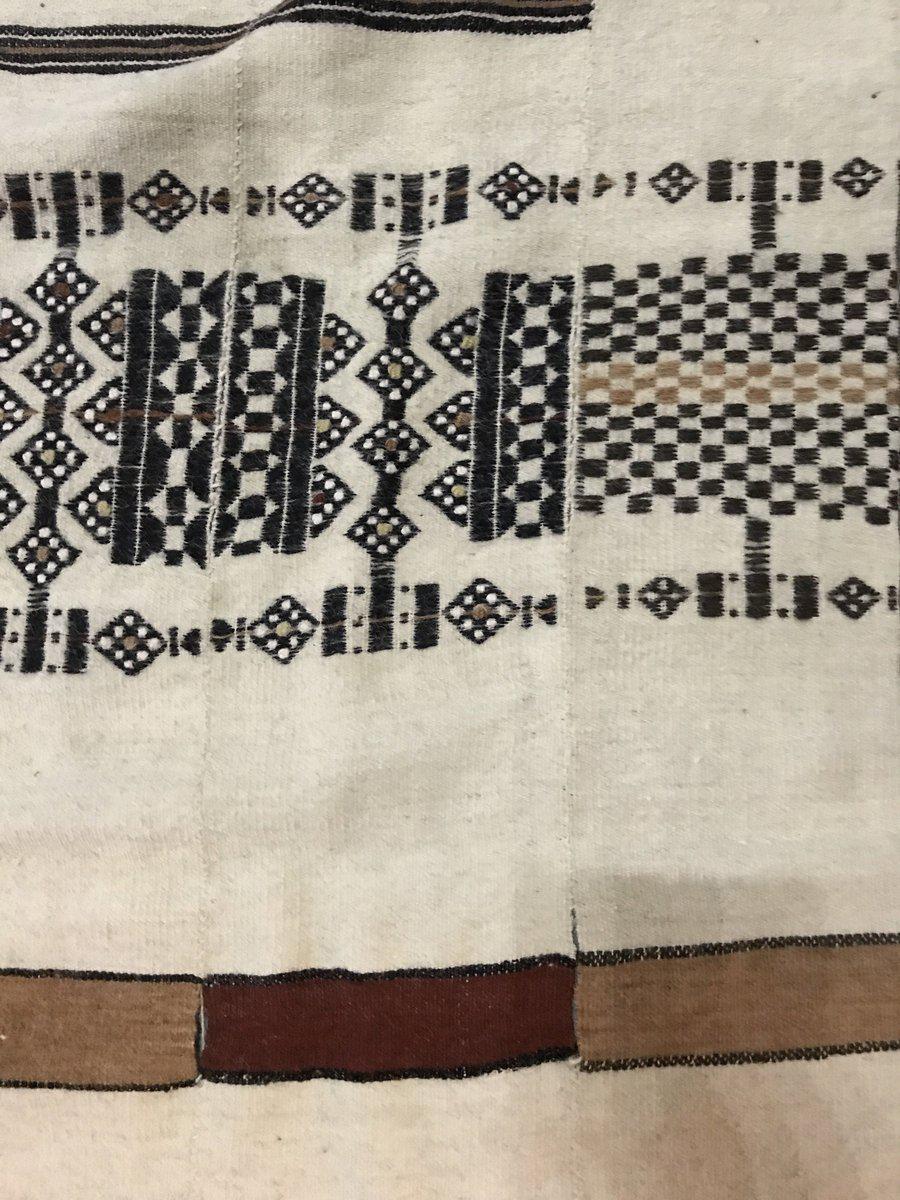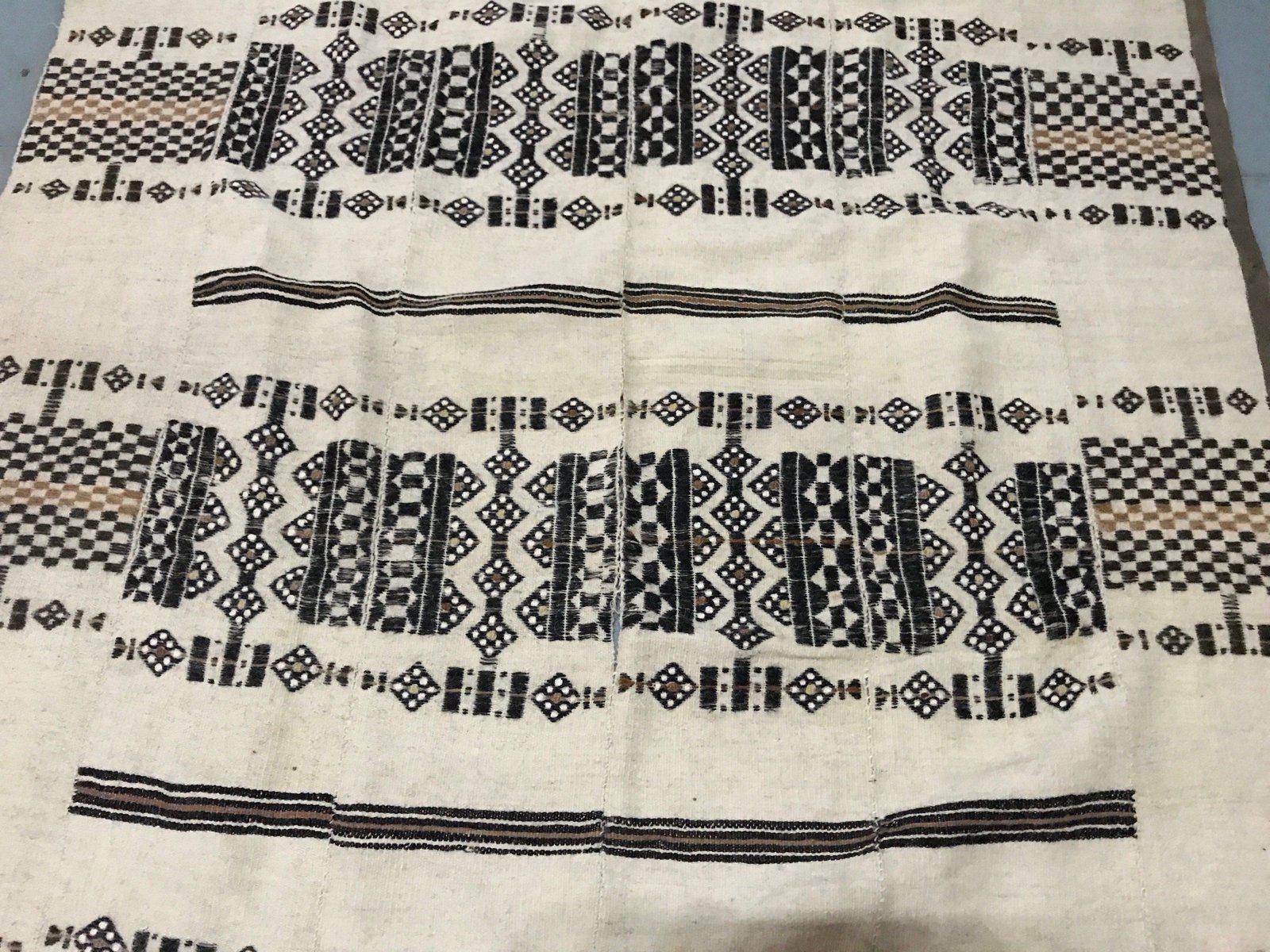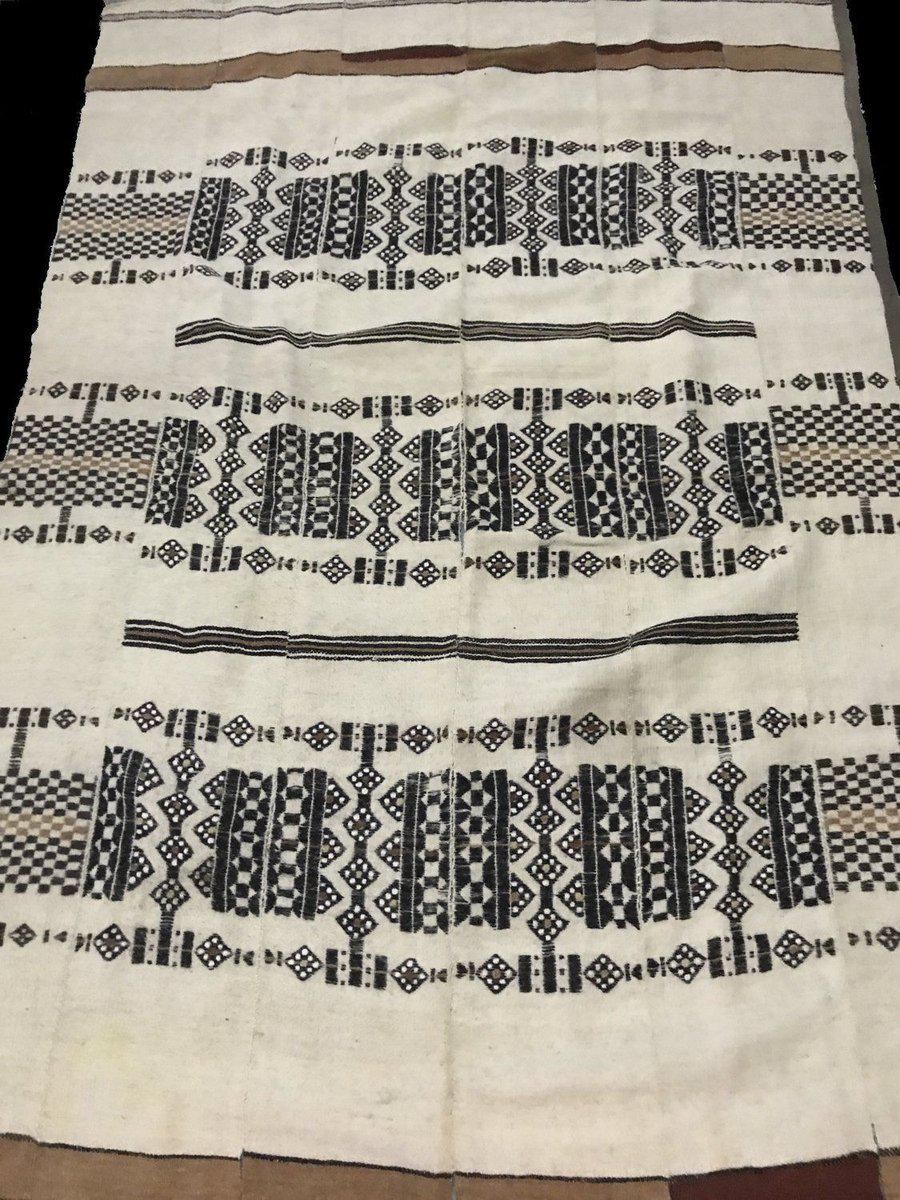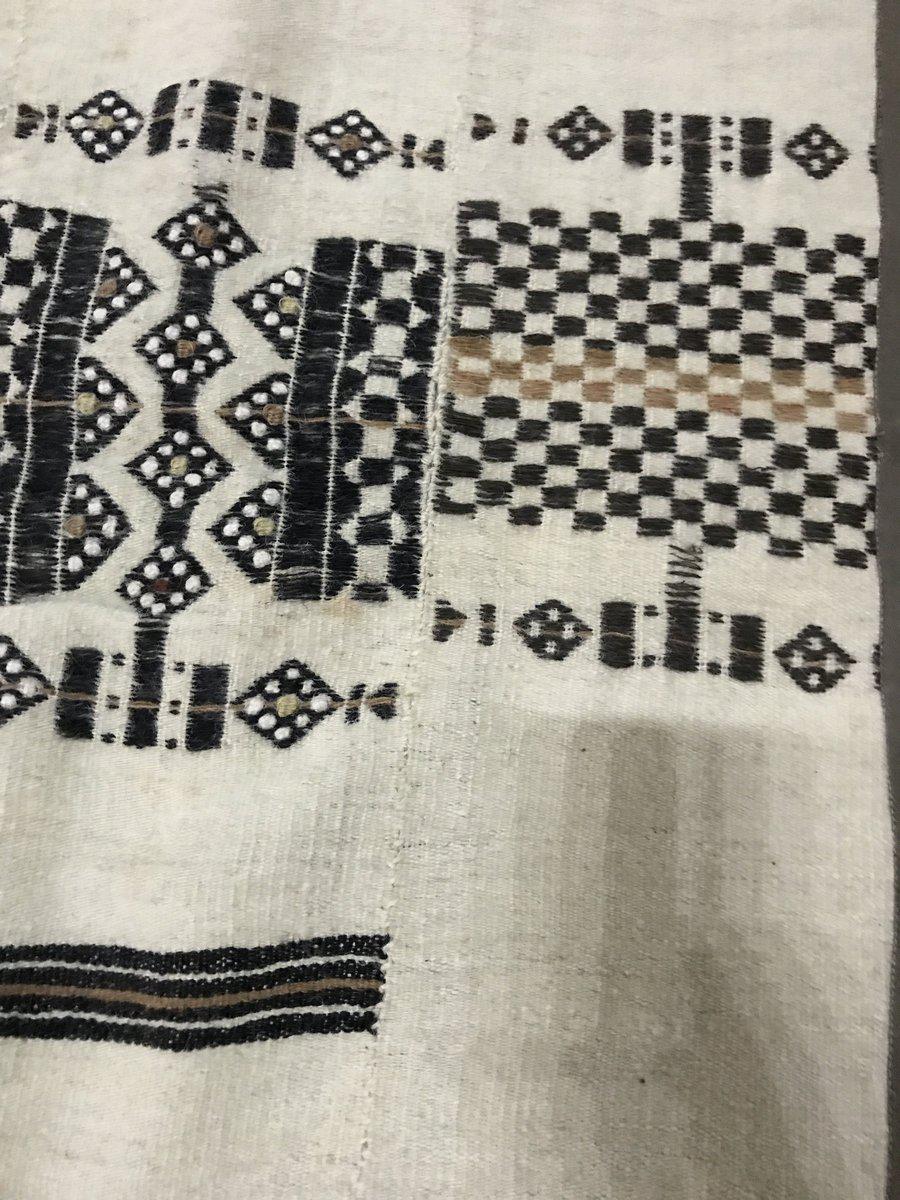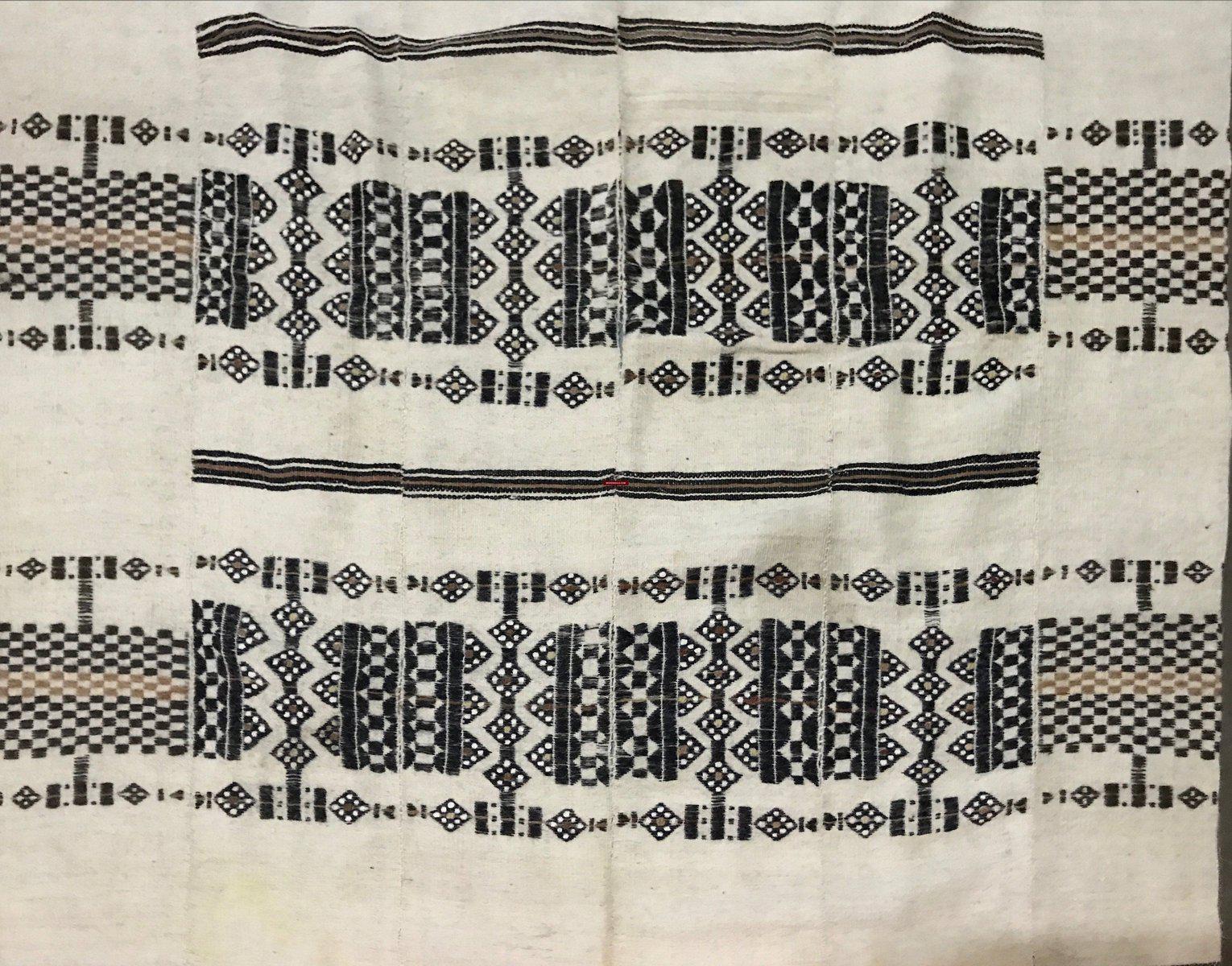1298 SOLD Antique Fulani Shawl Blanket
Sold to a discerning Antique Art-Lover
***
The Sahel, where most Fulani live, is an arid region south of the Sahara.
The area reaches both extreme heat during the day and also can get very cold at night. Throughout this area, wool or cotton blankets and cover cloths are used both for warmth in the cold nights and as protection against mosquitoes.
All utilize a weft faced weave structure, producing bands of designs across the cloth strips.
This appears to be an ancient technique in the area as it is used on Tellem textile fragments dating back to the C11th &12th ound in Bandiagara, Mali.
Through the twentieth century some cloths, such as Fulani kaasa and arkila, continued to be woven in long established designs.
Chiefs have used Fulani blankets for centuries to line ceremonial litters, cloak important drums, and various other display purposes.
It's made up of six panels sewn together to make the blanket. Some of the panels in between the stitching holding them together has become loose
Minor stains and other age-related imperfections
A grey cloth strip has been added along the length - for hanging.
Estimated to be from the 1920s
Mali, Fulani Nomads.
***
This item has spent a lifetime being used for the purpose of its creation with the original artist/user. Signs of this life lived heartily may be present on the piece in the form of stains, thread loss, loose threads, holes, tears, color run and other imperfections. Therefore the condition must be assumed to be “not” perfect. More photos of such imperfections will be provided on request.
***

